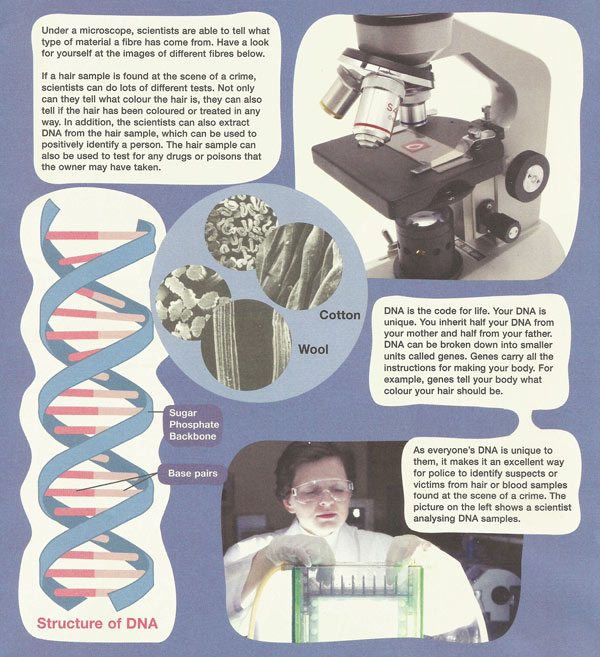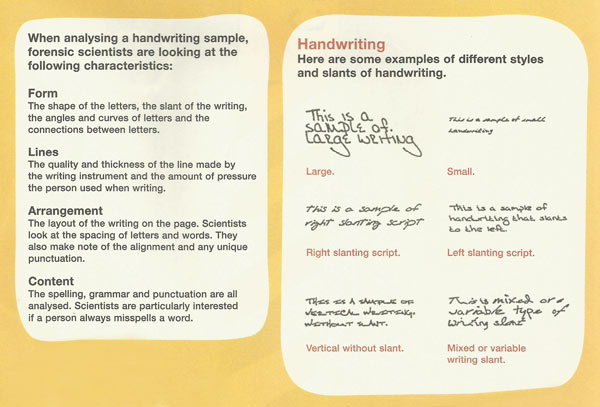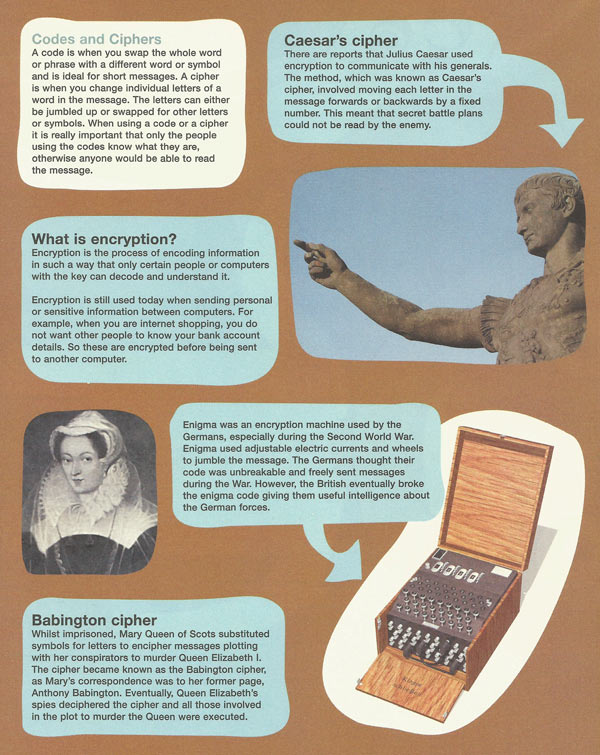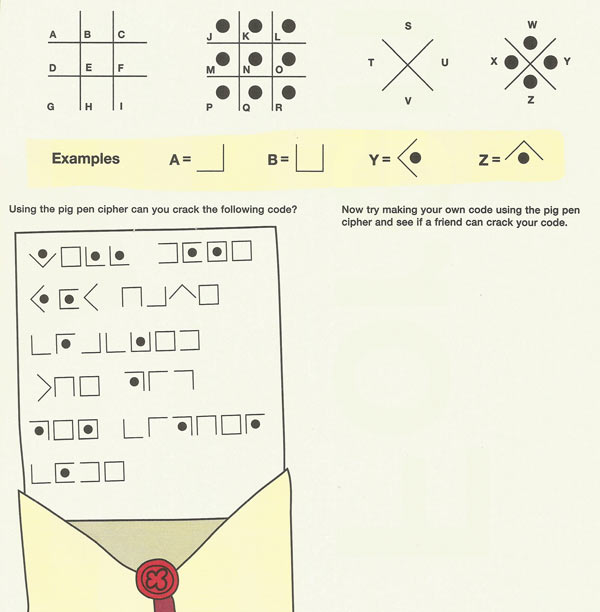FORENSIC SCIENCE FOR KIDS

Figure 1. What is forensic science?

Figure 2. Under the microscope.

Figure 3. Fingerprints.

Figure 4. Ink chromatography.

Figure 5. Handwriting analysis.

Figure 6. Cracking codes.

Figure 7. Pig pen code.

What is forensic science?
Forensic science is the name given to the use of a range of sciences and scientific techniques to answer questions that are of interest to the legal system (see Figure 1).
Under the microscope
It is really important that scientists thoroughly investigate a crime scene and collect samples of any fibers, hairs, or bodily fluids that they find. These samples can then be analyzed in the laboratory and compared to any potential suspects (see Figure 2).
Fingerprints
See Figure 3.
Experiment with Ink Chromatography
Chromatography is the process of separating small amounts of substances from a mixture by the rate at which they travel through a medium. Ink is a mixture of colored dyes, so chromatography can be used to separate the mixture of dyes (see Figure 4).
Your task
Ask a friend to write a note using a black water-soluble pen and leave a dot as evidence on the bottom of some filter paper. Can you identify the pen that was used to write a note?
You will need
What you need to do
How does it work
When the ink sample comes into contact with certain solvents, the colored dyes dissolve and can be separated. By placing the filter paper with the ink sample into a solvent, the ink spreads across the paper when it is dissolved. The different colored dyes within the ink move at different rates along the filter paper.
Handwriting analysis
Forensic scientists can analyze handwriting so that written documents can be used as evidence (see Figure 5). Scientists can try to answer a number of questions, for example, who wrote it? When was it written? Perhaps scientists are analyzing a ransom note or a forgery.
Everyone has their own unique style of writing. So, even if a criminal tries their best to disguise their handwriting. It will still exhibit some of their characteristics. Forensic scientists are also interested in the type of writing instrument used. For example a quill and ink, a pen or a pencil. They also analyze the type of paper written on.
Cracking codes
Have a go: Cracking codes
The pig pen was first used in the sixteenth century. The cipher uses symbols to replace the letters in the message, as shown in the diagram below (see Figure 7).
